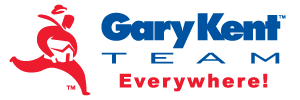“Hi Gary. My wife and I want to sell our rental condo in Mission Valley and buy a triplex or fourplex in North Park. I know I can avoid taxes by doing a 1031 exchange, but I dont know how they work. Can you enlighten me? ”
***ANSWER:
Ill be happy to
There are 3 common kinds of IRC 1031 tax-deferred exchanges: concurrent, delayed, and reverse.
A CONCURRENT exchange means you close escrow on your sale (“downleg”) and your purchase (“upleg”) at the same time.
More common is the DELAYED or “Starker” in which you close escrow on your sale first, then close escrow on your purchase later. You must identify your upleg within 45 days of closing your downleg. And you must close within 180 days of closing your downleg. These exchanges cost around $1,000.
Relatively new is the REVERSE exchange. In this, you close your upleg before closing your downleg. These require greater financial resources as you won’t yet have cash from the sale to complete your purchase. Similar to delayed exchanges, you must identify your downleg within 45 days of closing your upleg. And you must close your downleg within 180 days of closing your upleg. Reverse exchanges cost an extra $5,000+ to accomplish.
In all exchanges, you must have an equal or greater loan on your upleg and put all your proceeds in. If you take cash (called “boot”) from the sale or have a smaller loan on your purchase, you’ll be taxed on the difference.
You must follow other rules too. For more details see your tax advisor and also feel free to call me at (858)457-KENT.
